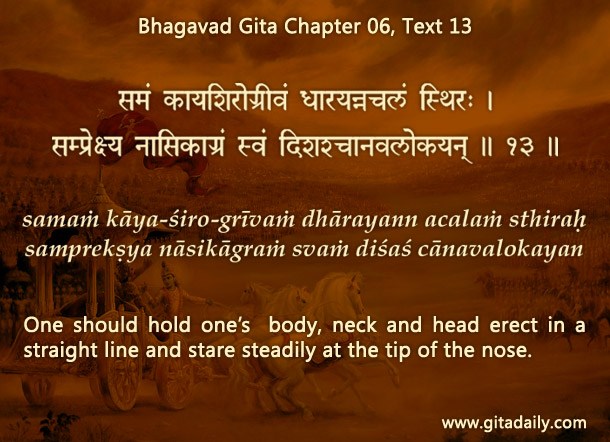Asanas (physical postures) are nowadays gaining popularity as means for improving fitness and figure. Bodily improvement, however desirable, is just a fringe benefit of the larger yoga tradition of which asanas are a part.
Obsession with the body can blind us to the far bigger gifts available through holistic yoga practice – freedom from worldly miseries and attainment of lasting happiness. For attaining these gifts, we need to free ourselves of vasanas (selfish desires). Such desires drag our consciousness away from our spiritual essence wherein we can relish perennial fulfillment. Further, vasanas bind our consciousness to matter, whose temporariness makes all material pleasures disappointing and frustrating.
Let’s understand how yoga counters vasanas and where asanas fall in this program. Asanas are one limb of an eight-stage process called ashtanga-yoga, which is one kind of yoga. Even within ashtanga-yoga, the regulation of vasanas is sought both before and after the asana stage: first by external discipline comprising prescriptions and proscriptions, and later by inner discipline that redirects our consciousness towards spiritual reality. The Bhagavad-gita (06.13) mentions asanas and immediately (06.14) moves on to yoga’s inner dimension by stressing that yogis make Krishna the object of their meditation. And the Gita’s sixth chapter that discusses ashtanga-yoga concludes (06.47) by declaring that the topmost yogis meditate on Krishna. When we fix our consciousness on Krishna, the all-attractive, all-blissful Absolute Truth, we relish a higher non-material enrichment that makes selfish desires initially resistible and eventually unappealing. Such meditation on Krishna is best done through bhakti-yoga, which the Gita (08.14) recommends as the easy path to spiritual perfection.
Thus, what asanas alone can’t offer and what the larger ashtanga-yoga process can offer only in its culmination – freedom from vasanas – that bhakti-yoga offers efficaciously by directly linking our consciousness with the goal of yoga and of life itself: Krishna.
To know more about this verse, please click on the image
Explanation of article:
Podcast:


Dear Chaitanya,
I think your interpretation which is unique relates more to Verses 14 & 15 than to Verse 13. Verse 13 only describes the posture. I would be glad to know your opinion.
Regards,
Sibaprasad
Yes, the explanation is based on the Gita’s overall message rather than on any specific verse. As the starting point for the article is asanas, I chose the Gita verse that talks most directly about asanas.
ys
ccdas
Very nice. Hare Krishna.